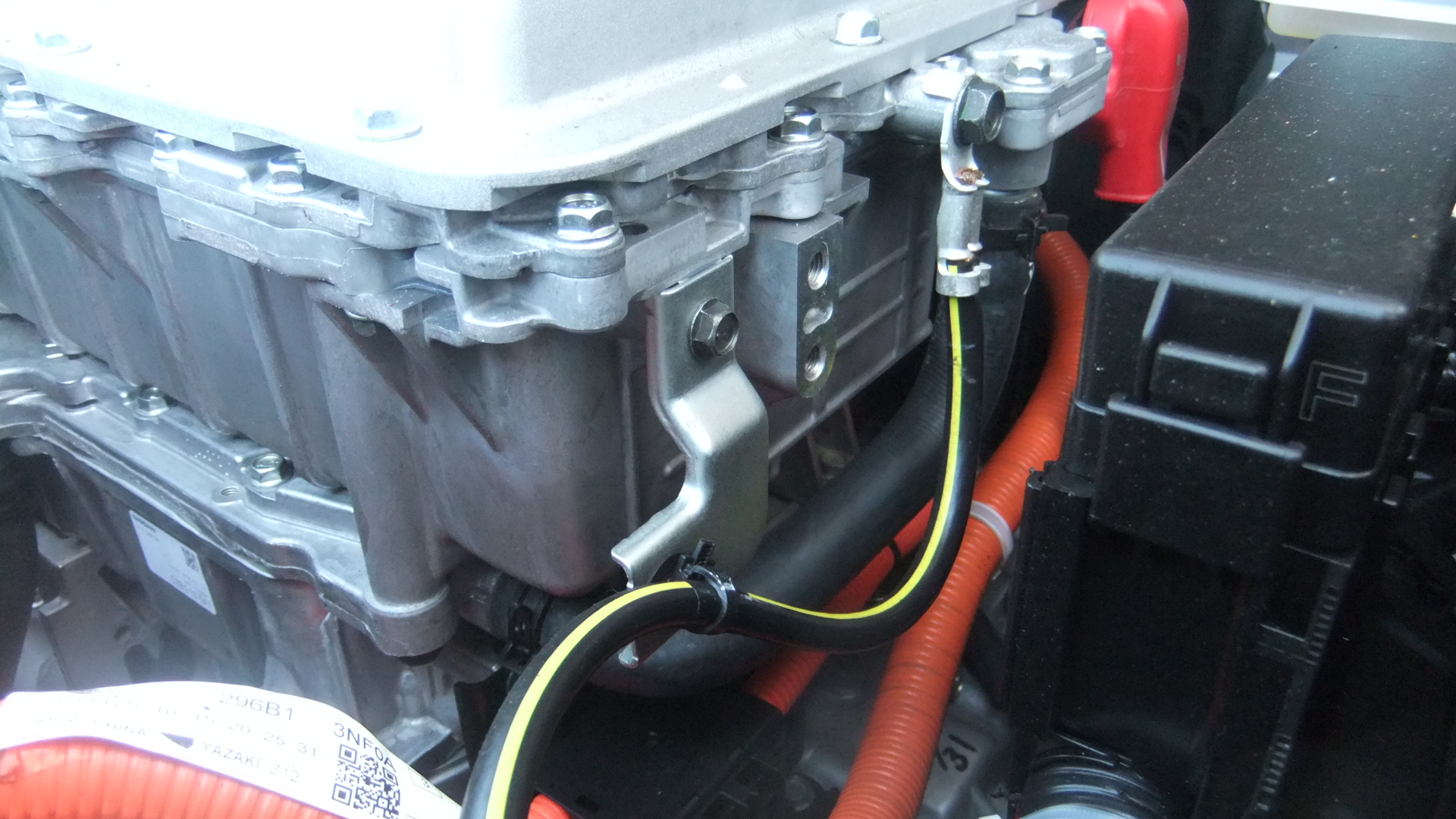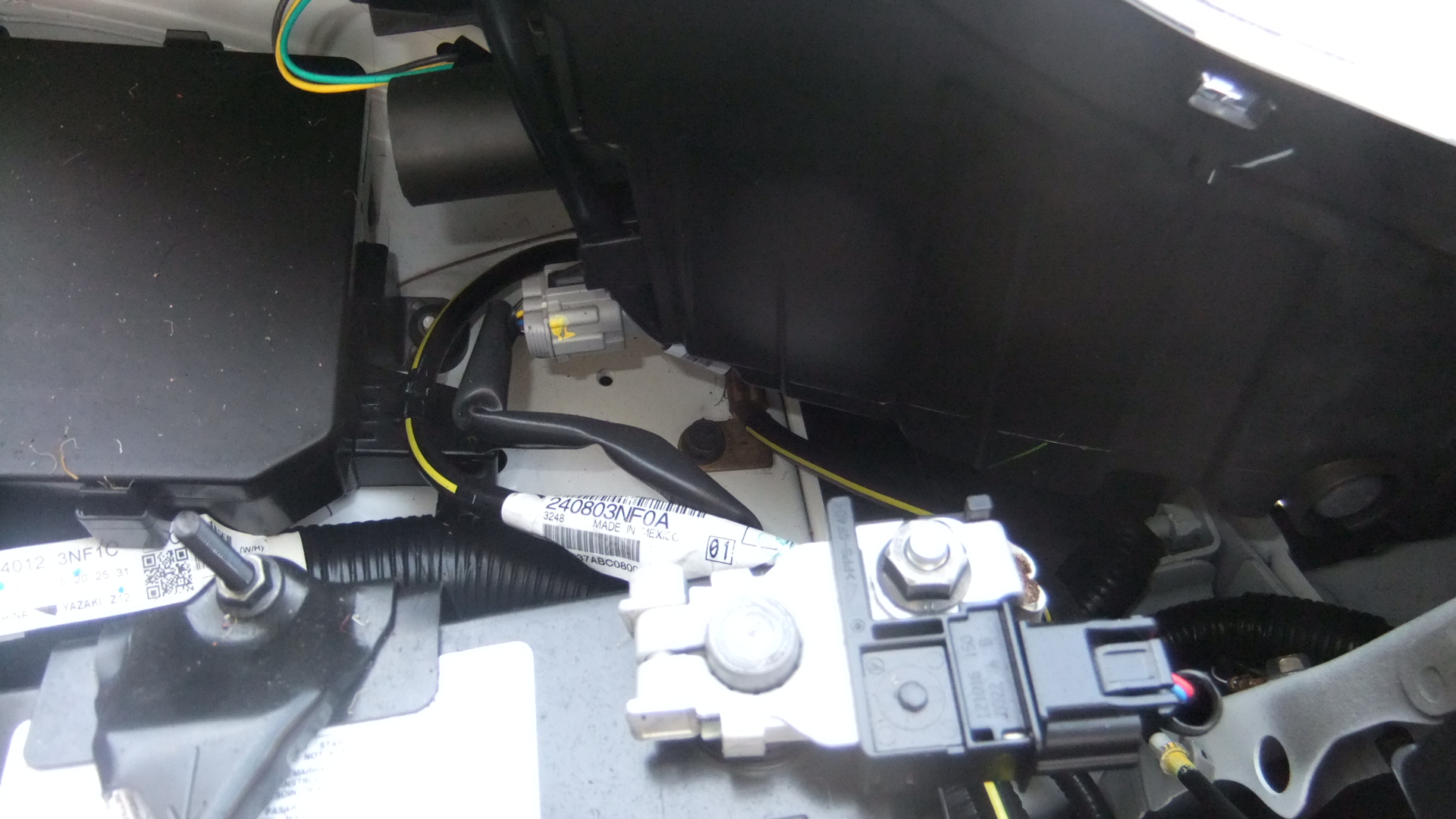NissanLeafCamper
Well-known member
BrockWI said:connected the negative to the body of the top part of the motor.
Hey Brock good to hear from you. I read through that thread but did not notice you were a 2013 owner. Model S to boot! From what you told it sounds like the dc to dc converter on the 2013 leaf provides the same about of power as the 2011 and 2012 dc to dc. That is good news. Were you also able to check voltage with the wipers running by any chance to see if it went up to 14.5v? You did not mention it, but I wonder if you had done any additional testing after that.
For the negative cable you mention "The body of the top part of the motor" Is this the same spot where the negative wire from the battery is hooked up to? Is it okay to clamp down the inverter's negative on the same spot as the lead acid battery's negative wire is? Would it cause problem if they are both hooked up together?

You can see the negative wire connected here at the top part of the picture. There is also another point that holds the wire in place. It does not seem to be a connection point but rather a holding point to hold the wire up. Would this be a good spot to connect the inverter? What is the purpose of holding the wire up like that? Just so it does not pull down where the wire is connected?
I also noticed that the negative wire of the battery is grounded? at two places? first it loops to the driver side and attaches to the metal frame of the car's body.

Then it loops around to the passenger side and connects to the top part of the motor (First pic I posted). Why two connection points for the negative wire of the lead acid battery? Is it just insurance against something?
Also, why the danger of the connections of the inverter to get hot? Is it because the surface area of the connection is small? Is it better to have a bigger surface area connected? Huge copper wires are best? What is the risk of the connections getting too hot? Melting? fire? Should I keep a fire extinguisher close by? I would likely run the induction cooker for about 10 minutes or 15. Depends on what i'd cook. Eggs are super fast though.... Frying meat might be a little bit at 10 I think.
